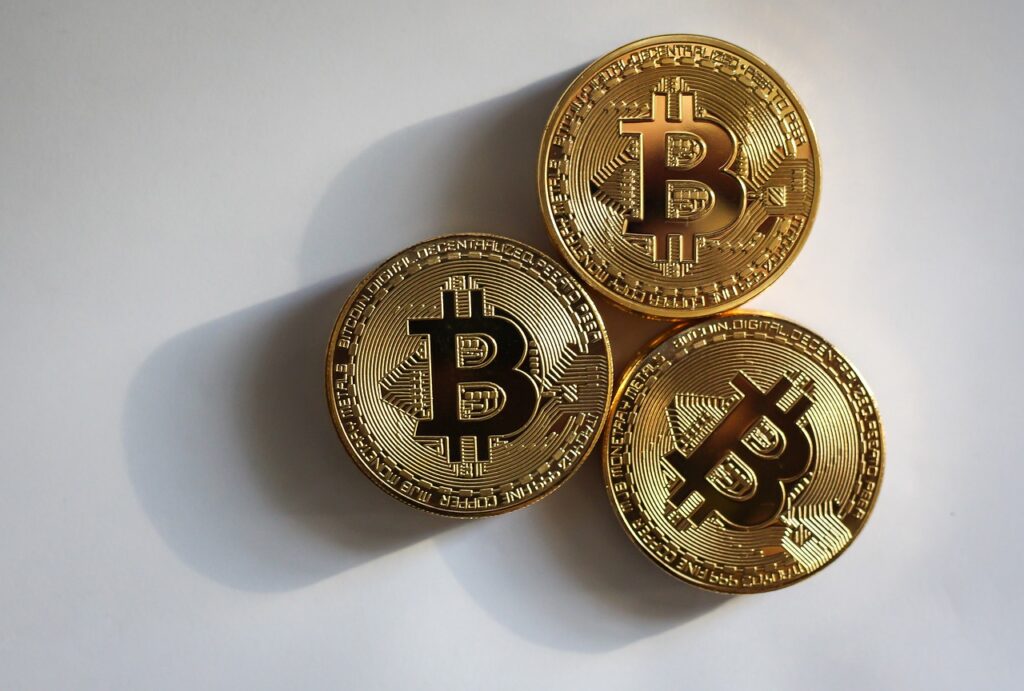Deconstructing DeFi: Understanding Its Architecture
Deconstructing DeFi: Understanding Its Architecture

What is DeFi and why it’s gaining popularity
Decentralized Finance, or DeFi for short, is revolutionizing the traditional financial landscape. It encompasses an array of financial applications and services that operate on decentralized blockchain networks, such as Ethereum. What sets DeFi apart is its ability to provide users with open access to a variety of financial tools, previously only accessible through traditional institutions. This level of accessibility, combined with the potential for greater financial inclusion and the promise of more transparent and efficient transactions, is what makes DeFi so appealing to many.
One of the primary reasons why DeFi has gained significant popularity is its ability to offer users greater control over their finances. Unlike traditional banks and financial intermediaries, DeFi enables individuals to be their own bank, giving them complete ownership and control of their funds. This appeal of self-sovereignty appeals to many, particularly in an era where centralized institutions’ trust is dwindling. Additionally, DeFi protocols are built on blockchain technology, ensuring transparency and immutability – two essential characteristics that resonate with those seeking more accountability and security in their financial transactions. As a result, DeFi has rapidly gained traction, with a growing number of users embracing the possibilities it offers.
• DeFi provides open access to financial tools previously only available through traditional institutions
• Offers greater control and ownership of funds, allowing individuals to be their own bank
• Built on blockchain technology, ensuring transparency and immutability in transactions
• Appeals to those seeking more accountability and security in their financial dealings
• Rapidly gaining traction with a growing number of users embracing its possibilities
The key components of DeFi and how they work together
DeFi, which stands for decentralized finance, comprises several key components that work in harmony to create a new financial ecosystem. One of the fundamental building blocks of DeFi is blockchain technology. By leveraging the transparent and immutable nature of blockchain, DeFi platforms are able to offer secure and tamper-proof financial services. This ensures that users can trust the transactions and data within the system, eliminating the need for intermediaries or traditional financial institutions.
Another crucial component of DeFi is smart contracts. These self-executing contracts operate on the blockchain and automatically execute the terms agreed upon by the involved parties. Smart contracts not only eliminate the need for intermediaries but also enable the creation of complex financial applications. Through programmable logic, smart contracts can facilitate a wide range of financial transactions, such as lending, borrowing, and trading, all in a decentralized manner. This opens up a world of possibilities for individuals who may not have access to traditional banking services.
Exploring the decentralized nature of DeFi platforms
DeFi platforms, at their core, embody the principles of decentralization. Unlike traditional financial systems that rely on centralized institutions, DeFi operates on blockchain technology to distribute power and control among its users. This decentralized nature ensures that no single entity or authority has complete control over the platform, making it more resilient to censorship and manipulation.
By eliminating the need for intermediaries, DeFi platforms enable users to directly interact with the protocols, providing them with greater financial inclusivity and autonomy. Participants can access a wide range of financial services, such as lending, borrowing, trading, and saving, without relying on traditional banks or financial institutions. This democratization of financial services opens up a world of opportunities, especially for the unbanked or underbanked individuals who lack access to traditional banking services. The decentralized nature of DeFi platforms empowers users to take control of their financial decisions, enabling them to transact and manage their assets in a more transparent and secure manner.
Understanding the role of smart contracts in DeFi applications
Smart contracts are at the heart of DeFi applications, playing a vital role in enabling automated and trustless transactions. In simple terms, smart contracts are self-executing contracts with the terms of the agreement directly written into lines of code. These contracts are stored and executed on the blockchain, ensuring transparency, immutability, and security.
One of the key advantages of smart contracts in DeFi is their ability to eliminate the need for intermediaries. By automating the execution of agreements, smart contracts allow individuals to directly interact with each other, cutting out the middleman. This not only reduces costs but also increases efficiency and speed in transactions. Additionally, smart contracts are programmed to execute only when specific conditions are met, ensuring that all parties involved in the transaction adhere to the agreed-upon terms.
The importance of liquidity pools in DeFi protocols
Liquidity pools play a vital role in the decentralized finance (DeFi) ecosystem, ensuring the smooth operation of various financial activities. In DeFi protocols, liquidity pools enable users to pool their funds together, creating a reserve of assets that can be utilized for various purposes. These pools act as a liquidity provider, allowing users to trade, lend, borrow, and earn interest without the need for intermediaries.
One of the primary advantages of liquidity pools in DeFi is the ability to provide liquidity for token trading. By contributing their assets to a pool, individuals can facilitate the exchange of different tokens, ensuring that there is always sufficient liquidity available. This eliminates the need for centralized exchanges and their order books, providing users with a more efficient way to trade their tokens. Furthermore, thanks to the decentralized nature of these pools, users have the freedom to create new trading pairs or contribute to existing ones, further enhancing the liquidity ecosystem in DeFi protocols.
How decentralized exchanges enable seamless trading in DeFi
Decentralized exchanges (DEXs) play a vital role in enabling smooth and efficient trading within the realm of decentralized finance (DeFi).

One of the key advantages of decentralized exchanges is their ability to provide seamless and instant trading opportunities. By leveraging smart contracts and blockchain technology, DEXs enable peer-to-peer transactions without the need for a central authority. This means that users can trade assets directly with each other, without relying on a third party to facilitate the exchange. As a result, transactions on DEXs are often faster and more efficient, ensuring that traders can quickly execute their desired trades without delays or intermediaries. With the power of decentralized exchanges, the world of DeFi opens up new possibilities for traders to participate in the global financial ecosystem with ease and autonomy.
The concept of decentralized lending and borrowing in DeFi
Decentralized lending and borrowing are integral parts of the emerging field of decentralized finance, or DeFi. In traditional financial systems, lending and borrowing activities are typically facilitated by banks and other centralized intermediaries. However, with DeFi, these activities can now occur directly between individuals through decentralized platforms.
One of the key advantages of decentralized lending and borrowing in DeFi is the removal of intermediaries. This means that borrowers and lenders can connect with each other directly, without the need for a middleman. By cutting out intermediaries, DeFi platforms aim to offer more efficient and cost-effective lending and borrowing services. This peer-to-peer nature also opens up opportunities for individuals who may not have access to traditional financial services to participate in lending and borrowing activities. With the growing popularity of DeFi, decentralized lending and borrowing are poised to disrupt the traditional financial landscape, offering a new level of financial inclusivity and accessibility for people around the world.
Exploring the security measures in DeFi platforms
Security is a paramount concern when it comes to decentralized finance (DeFi) platforms. With the absence of intermediaries and the reliance on smart contracts, ensuring the safety of users’ funds and data becomes crucial. One of the primary security measures in DeFi platforms is the use of audited and well-tested smart contracts. These contracts are scrutinized by security experts, white-hat hackers, and the community to identify and fix any vulnerabilities. By employing such measures, DeFi platforms aim to minimize the risk of smart contract exploits and protect users’ assets from potential attacks.
Additionally, DeFi platforms often implement robust security protocols to safeguard against external threats. These protocols include multi-factor authentication, encryption techniques, and secure communication channels. By utilizing these measures, platforms reduce the risk of unauthorized access to user accounts and prevent the theft of sensitive information. Moreover, many DeFi platforms also offer insurance options to compensate users in the event of unforeseen circumstances or security breaches. This not only enhances users’ trust but also adds an extra layer of protection to their investments.
The challenges and limitations of DeFi architecture
While the concept of decentralized finance (DeFi) offers numerous benefits, it also brings along certain challenges and limitations. One of the primary challenges is scalability. Currently, DeFi platforms often struggle to handle a large number of transactions simultaneously. As more users join the DeFi ecosystem, the strain on the networks increases, resulting in slower and more expensive transactions. This scalability issue hinders the mainstream adoption of DeFi as it needs to handle the volume and speed expectations of traditional financial systems.
Another limitation of DeFi architecture lies in its vulnerability to security risks. As DeFi platforms utilize smart contracts and decentralized applications (DApps), they become susceptible to hacking attempts or vulnerabilities in the underlying code. While smart contracts offer transparency and tamper-proof features, they are not immune to bugs or vulnerabilities, which can be exploited by malicious actors. These security risks pose a significant challenge for the DeFi industry, as user funds and assets could be at risk if proper security measures are not in place. Striking a balance between innovation and security remains a crucial obstacle that needs to be overcome for the broader acceptance of DeFi.
Future prospects and potential advancements in DeFi
DeFi, with its rapid growth and increasing adoption, holds immense potential for future advancements. As more users embrace decentralized finance, we can anticipate the development of innovative solutions and expanded use cases within the DeFi ecosystem. One potential area of growth is the integration of artificial intelligence and machine learning algorithms into DeFi platforms. By leveraging these advanced technologies, DeFi protocols can enhance decision-making processes and automate various tasks, improving efficiency and accuracy. Additionally, the integration of decentralized identity solutions holds promise for the future of DeFi, as it can provide users with enhanced privacy and security while ensuring compliance with regulations.
Another intriguing prospect for DeFi is the potential collaboration with the Internet of Things (IoT). With the advent of IoT devices becoming increasingly prevalent in our daily lives, the integration of IoT data into DeFi applications opens up a world of possibilities. For example, by utilizing IoT data, DeFi platforms can offer more personalized financial services, tailored to individuals’ specific needs and preferences. Moreover, the integration of IoT devices into DeFi systems can enable real-time monitoring and automation of transactions, further streamlining the user experience and enhancing the overall efficiency of the DeFi ecosystem.
The future of DeFi holds immense potential for further advancements and technological integration. As blockchain and decentralized technologies continue to evolve, we can expect even greater accessibility, scalability, and security within the DeFi space. With ongoing research and development, DeFi is poised to revolutionize traditional financial systems and empower individuals with greater control over their financial assets and transactions. However, it is essential to address the inherent challenges and limitations of DeFi architecture to ensure its growth and long-term sustainability. Continued collaboration between industry experts, regulators, and developers will play a vital role in shaping the future of DeFi and unlocking its true potential.
What is DeFi and why is it gaining popularity?
DeFi, short for Decentralized Finance, refers to a system of financial applications that operate on blockchain technology. It’s gaining popularity because it offers users more control over their finances, eliminates the need for intermediaries like banks, and provides access to financial services to the unbanked population.
What are the key components of DeFi and how do they work together?
The key components of DeFi include decentralized applications (dApps), smart contracts, and decentralized exchanges. dApps provide various financial services, smart contracts ensure automated and secure transactions, and decentralized exchanges enable users to trade assets directly without intermediaries.
How are DeFi platforms decentralized?
DeFi platforms are decentralized because they operate on blockchain networks, which are distributed ledgers. The decision-making power is in the hands of the community, rather than a central authority, making them resilient to censorship and control.
What role do smart contracts play in DeFi applications?
Smart contracts are self-executing contracts with predefined rules stored on the blockchain. In DeFi applications, they automate the execution of financial transactions, ensuring transparency, efficiency, and removing the need for intermediaries.
Why are liquidity pools important in DeFi protocols?
Liquidity pools are essential in DeFi protocols as they provide liquidity for trading.

How do decentralized exchanges enable seamless trading in DeFi?
Decentralized exchanges (DEXs) allow users to trade directly with each other without the need for intermediaries. They use smart contracts to facilitate peer-to-peer trading, providing transparency, security, and eliminating the risk of hacks or theft associated with centralized exchanges.
What is decentralized lending and borrowing in DeFi?
Decentralized lending and borrowing in DeFi platforms allow users to lend their assets to others and earn interest or borrow assets by collateralizing their existing holdings. This eliminates the need for traditional banks or credit institutions, making lending and borrowing more accessible and inclusive.
How do DeFi platforms ensure security?
DeFi platforms employ various security measures, such as audits, code reviews, and bug bounties, to ensure the safety of user funds and prevent attacks or vulnerabilities. Additionally, the decentralized nature of these platforms reduces the risk of a single point of failure.
What are the challenges and limitations of DeFi architecture?
Some challenges of DeFi architecture include scalability issues, high transaction fees, potential security vulnerabilities in smart contracts, and the need for user education on handling private keys.

What are the future prospects and potential advancements in DeFi?
The future of DeFi holds enormous potential for advancements such as improved scalability solutions, enhanced user experience, integration with traditional finance, interoperability between different blockchains, and the development of innovative financial products and services to cater to a wider range of needs.
Todays Featured Product:
Buy, exchange and grow your crypto securely with a Ledger hardware wallet, combined with the Ledger Live app. It’s never been easier to keep your crypto safe and accessible. Buy direct from Ledger.com and get todays Special Offers Here.




